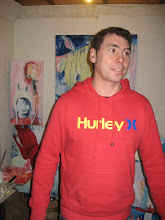FUNCTION OF THE AUTHOR
Celia Lury, “Contemplating a self-portrait as a pharmacist, a trade mark style of doing art and science”, Theory culture and society 2005
Celia Lury works in the department of sociology at the University of London. She regularly writes articles and has written a number of books.
“Becoming a brand name is an important part of life. It’s the world we live in.” This is the quote by Damien Hirst that introduces the essay by Celia Lury. She discusses how the, function of the author has changed today. Where is the author?
“Death of the author”, the author no longer has authority over the work. Intervention no longer matters. In other words, the creator has no control over how the work is read. This is a “response to the world we live in (94)”, says Hirst.
The author function has been replaced by the brand as in the case of Damien Hirst. A brand name now helps our understanding of art, “creativity invention and discovery” (106).
Damien Hirst is a self branding exercise.
The author now sits outside of his work. Hirst's spot paintings are made by assistants. The dots are all the same size, so are the gaps. The paint is the same. He is not concerned with originality; he is concerned with the use of his name as a brand or trademark. He is a director, a scientist, “a pharmacist” (100).
Although it could be said that nothing is new, we still strive for originality. Art seems to now be original in its placement (conceptually), not so much in its form. An artist now is creating a new way of looking at an old idea. Similarities here can be drawn with the pharmaceutical industry. When marketing a new heartburn medicine, Gaviscon, the market was saturated. The solution was by “inventing a new problem and offering a new solution (100)”.
“In physics, you know, if they can’t find the answer they want, they change the question. As long as you’re prepared to do that … there’s nothing you can’t do.’ (107)
Author function is being replaced by brand loyalty as Lury points out regarding the practice of Damien Hirst. This is an interesting point and one that we as artists should take note of. “Consumption of creative goods, like all goods, depends on ‘tastes’”1, and in the twenty first century those tastes are influenced by brand loyalty.
1. Elizabeth Currid, ‘The economics of a good party: social mechanics and the legitimization of art/culture, journal of economics and finance.vol 31.no 3 fall 2007
Subscribe to:
Post Comments (Atom)


Hi Hamish
ReplyDeleteI think art does creates new problems but I don't think it changes the question if it can't find an answer.